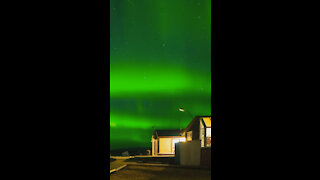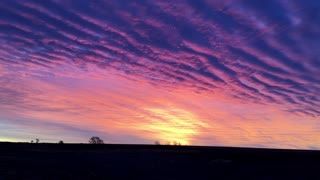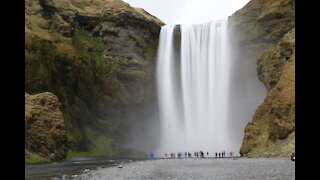Premium Only Content

Landscape of iceland ! AMAZING OMG
Iceland is at the juncture of the North Atlantic and Arctic Oceans. The main island is entirely south of the Arctic Circle, which passes through the small Icelandic island of Grímsey off the main island's northern coast. The country lies between latitudes 63 and 68°N, and longitudes 25 and 13°W.
Iceland is closer to continental Europe than to mainland North America, although it is closest to Greenland (290 km, 180 mi), an island of North America. Iceland is generally included in Europe for geographical, historical, political, cultural, linguistic and practical reasons. Geologically, the island includes parts of both continental plates. The closest bodies of land in Europe are the Faroe Islands (420 km, 260 mi); Jan Mayen Island (570 km, 350 mi); Shetland and the Outer Hebrides, both about 740 km (460 mi); and the Scottish mainland and Orkney, both about 750 km (470 mi). The nearest part of Continental Europe is mainland Norway, about 970 km (600 mi) away, while mainland North America is 2,070 km (1,290 mi) away, at the northern tip of Labrador.
Three typical Icelandic landscapes
Iceland is the world's 18th-largest island, and Europe's second-largest island after Great Britain. (The island of Ireland is third.) The main island covers 101,826 km2 (39,315 sq mi), but the entire country is 103,000 km2 (40,000 sq mi) in size, of which 62.7% is tundra. Iceland contains about 30 minor islands, including the lightly populated Grímsey and the Vestmannaeyjar archipelago. Lakes and glaciers cover 14.3% of its surface; only 23% is vegetated. The largest lakes are Þórisvatn reservoir: 83–88 km2 (32–34 sq mi) and Þingvallavatn: 82 km2 (32 sq mi); other important lakes include Lagarfljót and Mývatn. Jökulsárlón is the deepest lake, at 248 m (814 ft).
Geologically, Iceland is part of the Mid-Atlantic Ridge, a ridge along which the oceanic crust spreads and forms new oceanic crust. This part of the mid-ocean ridge is located above a mantle plume, causing Iceland to be subaerial (above the surface of the sea). The ridge marks the boundary between the Eurasian and North American Plates, and Iceland was created by rifting and accretion through volcanism along the ridge.
Many fjords punctuate Iceland's 4,970-km-long (3,088-mi) coastline, which is also where most settlements are situated. The island's interior, the Highlands of Iceland, is a cold and uninhabitable combination of sand, mountains, and lava fields. The major towns are the capital city of Reykjavík, along with its outlying towns of Kópavogur, Hafnarfjörður, and Garðabær, nearby Reykjanesbær where the international airport is located, and the town of Akureyri in northern Iceland. The island of Grímsey on the Arctic Circle contains the northernmost habitation of Iceland, whereas Kolbeinsey contains the northernmost point of Iceland Iceland has three national parks: Vatnajökull National Park, Snæfellsjökull National Park, and Þingvellir National Park. The country is considered a "strong performer" in environmental protection .
-
 0:20
0:20
EntertainmentVideos
4 years agoIceland
11 -
 0:12
0:12
NancyLee.Creative
4 years ago $0.01 earnedAmazing Sunrise Clouds
2491 -
 0:31
0:31
Amal Hermuz
4 years agoSunset Amazing
1061 -
 0:56
0:56
aznative13
4 years agoAmazing tunnel
135 -
 3:57
3:57
KindredSpirits
4 years agoBeautiful Iceland
75 -
 0:12
0:12
Funny animals
4 years agoThat's Amazing!
90 -
 0:53
0:53
Rachido
4 years agoAmazing thing
1991 -
 0:15
0:15
Amolaa
4 years agoAmazing Beautiful butterfly diamonds ring amazing
1332 -
 54:13
54:13
Sarah Westall
12 hours agoCIA Disclosures: Ark of the Convenient, the Pyramid Code, Ley Lines & Earth’s Energy w/ Jason Shurka
106K25 -
 1:16:28
1:16:28
Kim Iversen
13 hours agoThere Was No COVID Virus! How We've All Been Duped By The Medical Establishment
168K349